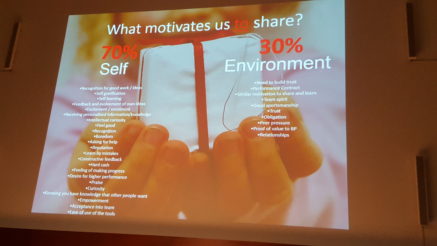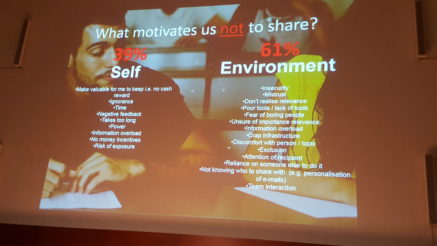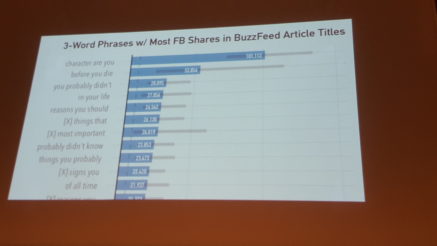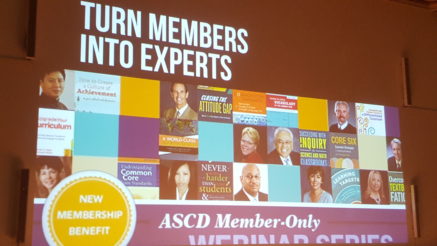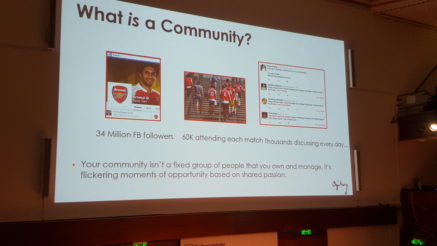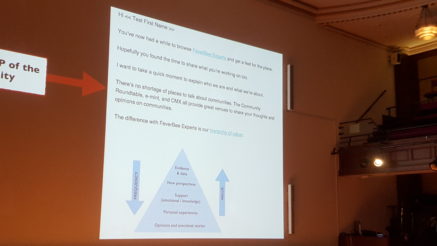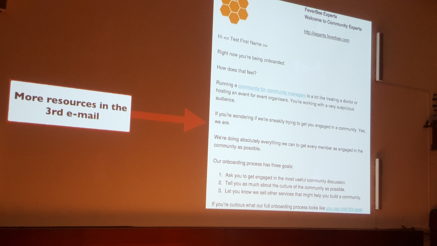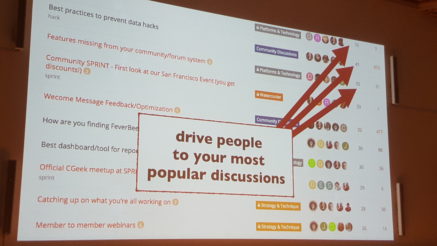How to build an online community?
23 December 2016 By Northern Lights

In February this year, I attended Feverbee’s SPRINT conference, 14 fresh skills to boost digital engagement – all about building and engaging with online communities.
I delayed writing a blog on the event, because I was keen to see how this was followed up and what I could learn from being a part of Feverbee’s own community – and put into practice myself.
The biggest learning for me was to think about all our clients as ‘building communities’. Most of our clients are B2B – professionals, corporates, individual leaders – who want to engage with others in their network. Are they in a community? I think they are, even if they only want a ‘community’ of a dozen or so people. But we haven’t thought of approaching this as an online community, more as highly sophisticated networking and relationship building online.
So have we changed our thinking and approach as a result of the Feverbee event? Here I want to share the key points that I took from the conference and then what we have done as a result.
1. The psychology of engagement
There was a lot in the conference about the psychology of things we respond to. None of this was new, but it analysed a lot of what we do instinctively and reinforced the need for what we would call ‘clickability’. What makes you want to click and open and read an email, a tweet or a blog? And then respond.
I like these two slides which look at what makes us want to share – and perhaps more importantly, not share, content and ideas.
For me, most of these are just the fundamentals of building relationships – or networking. Thanking and recognising someone’s contribution, being generous with your knowledge, asking for help, being relevant – these are all networking essentials.
I was going to say that the bits that are different with an online community are issues such as ‘takes too long’, ‘information overload’ and ‘risk of exposure’ – but actually there are networking equivalents even with these.
I loved this list of phrases that get the most responses online – the top one, by far, is ‘what character are you’ followed by ‘before you die’! There is then a large grouping of phrases that are all similarly effective including ‘reasons you should’, ‘probably didn’t know’ and ‘in your life’.
2. Turn members into experts
This was the biggest ‘eureka’ moment from the whole day – turn each member of your community into an expert. The principle is to understand everyone’s expertise in your community and then when you get a question or issue, go to the individual and specifically say ‘John, I know you mentioned working in this area and I wondered if you could respond to Annie’s question on ….’.
It is very rare that someone will ignore a specific request like this. It has all the right ingredients – recognises someone’s expertise, makes their expertise relevant to the request and flatters them.
We do this to some extent when we ask experts to write a guest blog, either for us or for a client, it’s a win:win for everyone (this is an example of a guest blog by Sarah Burnett on our site).
3. Online community managers
One of the surprises for me was to meet a number of online community managers at the event, working for the likes of Big 4 accountancy firms and lawyers. I assumed this was a job to engage the outside world with their firms, but they explained this is about internal communities. One said it is about knowledge sharing. You identify the expertise of people in your firm and then the community uses this knowledge and expertise to solve problems, innovate and win tenders.
4. How many people do you need for a community?
What size should a community be? This is one of the things I have mulled most since the conference. What is a community and how big should it be? I mentioned above that we work in the B2B space and for most of our clients they want to engage with maybe 5, 10, 20 – possibly 100 new clients in a year. So we aren’t really talking about the need to create huge communities. Or are we?
Richard Millington of Feverbee started the conference by saying that 1% of your community will visit your site, 20% of these will contribute and 30% of these will still be active in three months. So you need 16,666 visitors for one regular, active participant.
That sounds unachievable, but this is where I think you have to be careful in adapting some of these principles to your own audiences. I remember giving a talk in Dubai to a few hundred business people and one of the questions after was to do with how could they reach ‘the world’. I asked the delegate how many new customers they needed this year and it was something like 50. So we then talked about where those 50 were and how she could engage, rather than trying to be out there to everyone, when she doesn’t need everyone.
Years ago, I heard Thomas Power speaking at a conference and he said it takes three to five years to build an online community. It was reassuring because at that time we had been active in social media for a couple of years and weren’t really seeing much impact from activities. Fast forward eight years or so and we know we have a community. What does this look like for us?
- The number of times I meet people at networking events who spontaneously refer to a blog I have written weeks, if not months, ago
- I recently wrote a blog on ten questions every board should be asking about social media. I posted a link on LinkedIn and Christine Simms commented ‘Clear and relevant as always, Victoria. And timely for board meeting tonight, thank you’. The bit that interested me in this was ‘as always’. I don’t know Christine well and we haven’t spoken in … it must be years. Clearly though she has read more than one of our blogs – a part of our ‘community’?
- We recently posted that a client of ours was looking for a PA in Leeds – and got five quality suggestions and the client recruited one of them
So I reckon the measure of ‘a community’ is that you can ask a question, post a comment or share content and have a good quality response – the best being to sign up to things and eventually win business from it. I have always thought of this as networking rather than ‘community’ but is it essentially the same thing?
I was trying to estimate the size of our community – I reckon if you include our database of contacts and clients, LinkedIn connections, Twitter followers and a few other networks, it will be around 3 – 5,000 people. So in the B2B market, you can get good responses from a far smaller community.
5. Email campaigns
The part of the conference that I have been watching since is all to do with emails to communities. There was a lot of common sense stuff in the session to do with always sending ‘content’ (ie something that is useful, not salesy), making it relevant, having a call to action and so on. I have included a snapshot of some of the email processes here
Essentially, this was talking about creating email campaigns.
What I have been watching is how Feverbee has put all the tips from the conference into practice with me. Since the conference, I have received 80 emails from Feverbee – roughly two a week. Only one or two titles caught my attention, enough to open them. When I first signed up to the conference, we were all asked to introduce ourselves online and say ‘what I’m working on at the moment’.
To be honest, it felt awkward – I think I looked at it and didn’t do anything. I think I did share some of my expertise. So in a way, it is my fault if this hasn’t been an engaging process – I didn’t ‘reach out’ initially and certainly no-one has personally reached out to me since.
But, here’s the rub. Building a community is about drawing people in, engaging them without them realising, so that it is easy and natural to share, have a conversation and help. In 80 emails, I have never once felt engaged, despite this being a topic I am really interested in, want to learn more about and would have been happy to share expertise and take part in discussions. Why haven’t I?
My thinking is
- The language used in this community is very ‘social media’ and a bit American. It doesn’t feel business focused, which is the language of our clients
- No-one has ever come to me personally – or at least to feel personal – in either email or call
- I have never been asked for my specific expertise to solve a problem. Anyone who knows me will know you only have to ask and I will normally be there in seconds for you!
Clearly Feverbee has built a very successful business and created an engaged community. In this case, I just have to say this one is not for me.
It has been an interesting exercise though and confirmed a lot of my thoughts and I have got a lot of new ideas that I am still thinking about how best to put into practice. My main conclusion is that in the B2B world, it probably is good to think of your target audience as a ‘community’. Use the language of your audience – in our case this would be simple business language. And the principles of networking are fundamental to building relationships and communities.
The one new idea I am still mulling is how to turn members of our community into experts, beyond guest blogging. Any ideas welcome!


